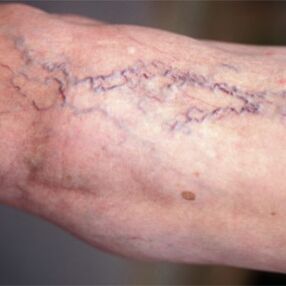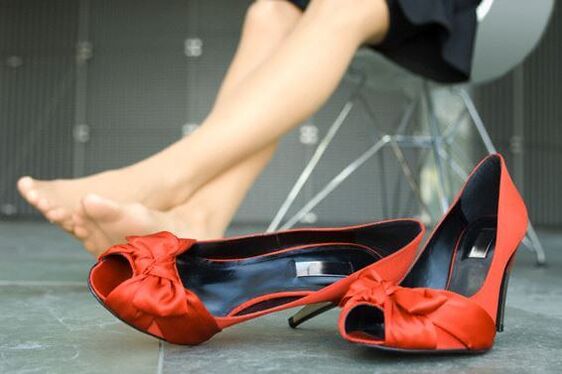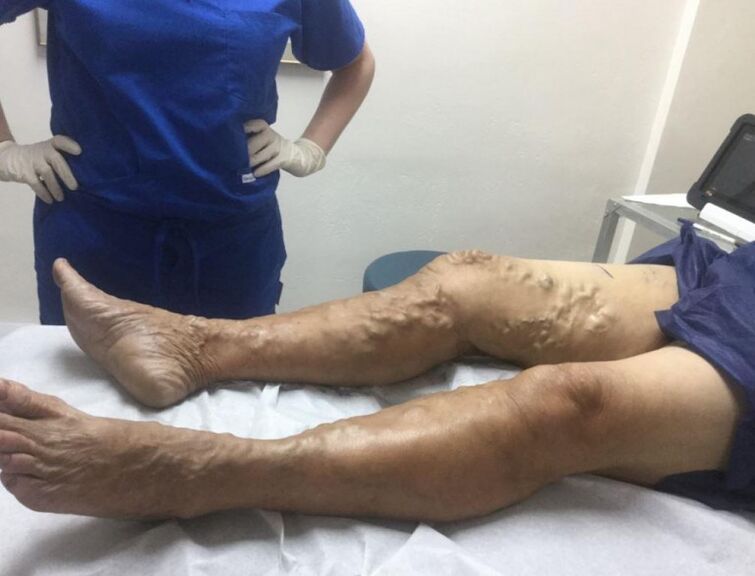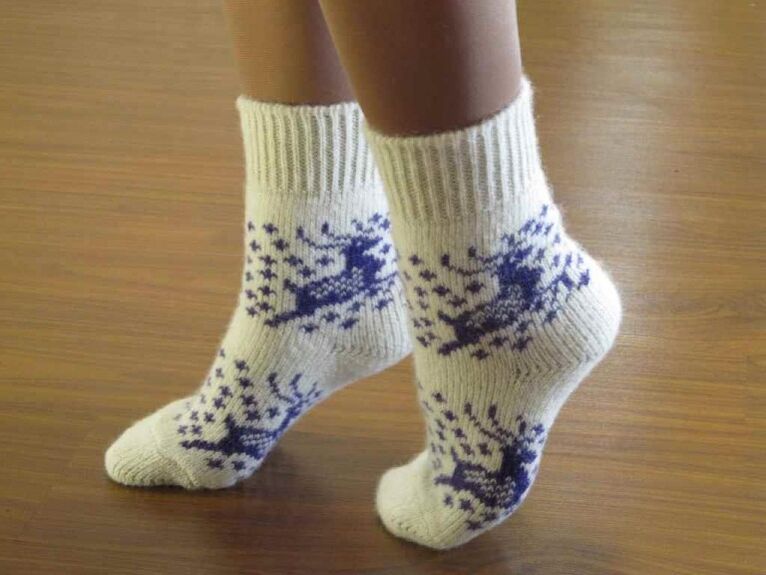Many people experience varicose veins in their lives.Unfortunately, this is a fairly common phenomenon, affecting not only the legs, as is commonly believed, but also other organs.Fortunately, it is treatable.Yes, it is long and complicated and should be started only after fully understanding the reason why it happened.
WHAT CAUSES FRAGMENT, WHO SHOULD BE WORRIED?
The main symptoms of the onset of the disease:
- the appearance of spider veins, or even reticular veins;
- veins become visible;
- uncomfortable dry skin on feet;
- cramps in leg muscles;
- Leg swelling and heaviness appear at the end of the day;
- thickening or darkening;
- Veins become sensitive.

What are varicose veins?This question torments many middle-aged people and others.This term refers to swelling of the veins in the lower extremities.The veins swell, form knots, become very crooked and form a rough blue surface.
This happens because the blood flow in the veins is not good enough.Blood stops moving as usual, causing pressure inside the veins to increase.When it exceeds all normal levels, the excess blood begins to stretch the walls of the veins.The edges of the vessels move closer to the upper layer of the epidermis and are visible to the naked eye.The first sign of varicose veins is the appearance of a network of blood vessels.Blood vessels in the legs are visible through the surface of the affected skin.
Varicose veins - they have been known since ancient times.Even Byzantine doctors mentioned this disease in their works.The Egyptians treated it using elastic bandages, and Hippocrates, Avicenna and Paracelsus tried to invent more effective ways to treat it.
What is very scary is that this pathology is very common - about 25% of the world's population is susceptible to this disease.Phlebologists believe that the main cause of varicose veins is the poor level of development of connective tissues in the legs.Usually, women suffer from this disease because constant hormonal changes create good conditions for the disease to develop.

PREVENTION OF FALLS
Healthy veins require constant self-care.In the early stages, varicose veins detract from the beauty of the legs and pose a slight danger to health, but as they progress, they cause complications and are life-threatening.Varicose veins of other organs are often companions of various diseases and to obtain a real effect, they need to be treated along with them.Risk groups to remember first about preventing varicose veins:
- Anyone with a sedentary lifestyle.
- It costs a lot during the day, for example at work.
- Who is overweight or obese?
- Frequently wear high heels or shoes that are too tight.
- Have disease (or recent surgery) in the pelvic area.
- Wearing tight clothes hinders blood circulation.
- Often sits cross-legged.
- Pregnant women.
- Athletes train with frequent overloads.
- Use hormone medications.
Many people do not even suspect that they are carrying a serious illness.The advanced stage of this disease is quite difficult to treat, unlike the early stages.Therefore, everyone, and especially people with bad heredity, need to know what varicose veins are, their symptoms and remember that a timely visit to a phlebotomist is as necessary as a preventive examination at the dentist.You need to take care of your health yourself without letting everything take its course.
Varicose veins, what are they?
To understand what varicose veins are, let's understand the basic cause of this disease.As you know, our body is penetrated by a dense network of blood vessels, some carry blood to the heart - veins, others do the opposite - transport blood in the opposite direction - arteries.As long as the system works smoothly and the blood vessels are clean, elastic and not under excessive tension, everything is fine.If frequent failures begin, sooner or later they can lead to diseases, one of which is varicose veins.
It can occur in any part of the body, but is most often located in the extremities.Partly because raising blood to the legs, the veins are subjected to high loads, partly because our limbs are one of the busiest parts of the body - we are forced to lift weights, walk a lot, stand or sit, which is also not good, because it interferes with normal blood flow.
Varicose veins of the limbs: COMPLICATIONS
The most common form of this disease, which is essentially what varicose veins mean, is varicose veins in the legs.Its initial symptoms have been listed above, but what can lead to neglect of treatment?We list the main complications of this disease:
- thrombophlebitis;
- venous thrombosis;
- trophic ulcers;
- bleeding from varicose veins.
What is thrombophlebitis?This is an inflammation of the outer vein wall and the appearance of blood clots on it, which not only narrow the space for blood circulation but can eventually completely block the blood vessel.It is accompanied by varicose veins in the extremities almost from the beginning.And as a result, a person who does not take care of his veins and experiences a series of complications will suffer from acute thrombophlebitis, when a blood clot not only interferes with blood circulation, but is also the center of inflammation, affecting not only the vessel wall, but also neighboring tissues.
Venous thrombosis– this is the name of deep thrombophlebitis, an equally serious and difficult to treat disease, when blood clots obstruct blood flow, blood vessels and surrounding tissues become inflamed.What is a blood clot?This is the appearance of blood clots in the vessels, obstructing blood flow, even completely blocking the blood vessel.Even a partial reduction in fresh blood supply will slow down tissue metabolism and lead to the accumulation of its products, and complete blockage can eventually lead to cell death, i.e. tissue necrosis.
The particular danger of these diseases is that they can eventually lead to thrombosis - a loose blood clot that travels through the bloodstream throughout the body, blocking one of the major arteries, which in turn can cause death.
Another serious problem, varicose veins in the final stages, are trophic ulcers - open wounds that do not heal for a long time.How long?If within a month and a half the wound does not seem to heal, then this is a trophic ulcer.She is being treated, but this is a long and complicated treatment process that requires a combination of surgery and treatment.
No less dangerous is a complication such as bleeding from varicose veins.It can be caused simply by thinning of blood vessels in places of thickening or by mechanical stress.Because it costs nothing to damage a vessel that has become thin and lost its elasticity.Don't think this only applies to external veins;The deep ones are also very “fragile” and susceptible to any stress, shock or displacement.
Consequences of not treating varicose veins in the photo:

The varicose veins in the video create an even sadder impression.To prevent this from happening, you need to consult your doctor as soon as possible and strictly follow all his instructions, both in treatment and in lifestyle.
TYPES OF CART
As mentioned above, there are many other types of varicose veins.There are many of them;These diseases arise for a variety of reasons, and while some are quite common, others are very rare phenomena, often associated with other diseases.
- Reticular varicose veins are a network of blue stars on the thighs and calves.It occurs even in young and thin people and is often considered only a cosmetic defect, although this is the first sign - you need to see a vein surgeon.
- Stars and vascular networks on the face are a reason to visit an endocrinologist, as this often indicates that a person has problems in the endocrine system.Although the reason can also be lifestyle - alcohol abuse, fatty and unhealthy foods, darkening of the skin, habit of squeezing acne.
- Varicose veins in the hands - this problem often occurs in athletes and people whose work requires constant heavy loads on the hands.
- Varicocele is a condition in which varicose veins surround the testicles.This is a very common condition, so men, especially teenagers, need to consult a doctor at the first symptoms because untreated it often leads to infertility.
- Hemorrhoids are varicose veins in the rectum.It can be caused not only by a sedentary lifestyle but also by heavy lifting, pregnancy, constipation and a host of other reasons.
- Varicose veins in the legs have many stages and if not treated in the early stages can lead to serious vascular diseases and disability.
- Visceral varicose veins often occur as complications of other diseases or in the postoperative period.These can be varicose veins of the pelvic organs, stomach, esophagus, etc.
Here is a short list of the main types of this serious disease.You can learn about the treatment of varicose veins of each type from detailed articles posted on our website.We try to regularly talk about both traditional and most modern treatments.
CHRONIC VEIN DEFICIENCY
The origin of this problem is our habit of walking on two legs, which means we are the only species on Earth susceptible to this condition.We will not consider pseudoscientific hypotheses explaining why this happens, although some of them are quite funny.For example, one believes that humanity came to earth from Mars, where the force of gravity is much less, and therefore our bodies are not adapted to the earth's load, the other believes that humans were created by aliens and are somewhere underdeveloped.However, walking straight requires blood vessels to raise blood to a significant height, which means it puts them under severe stress.
Normally this system works harmoniously, the blood quickly and evenly supplies oxygen and necessary substances to all parts of the body.But if some incident occurs (injury, for example) or the body is constantly exposed to some unfavorable factors (hard work, weight, hormonal deficiency, etc.), CVI develops - chronic venous insufficiency.In recent decades, this disease has become increasingly younger and now occurs not only in the older generation, but also in adolescents, and therefore everyone should know its symptoms:
- telangiectasia - dilation of small superficial blood vessels;
- leg swelling, worse in the evening;
- cramps, goosebumps and other painful sensations in the calf muscles;
- cold feet;
- foot skin pigmentation;
- General discomfort and fatigue throughout the day.
As you can see, they largely coincide with the symptoms of varicose veins that were listed at the beginning of the article, because this is the beginning of the same disease - varicose veins.Therefore, if you have at least some of these signs, you need to immediately contact a vein surgeon, who will prescribe treatment and help you decide on your diet and lifestyle.Varicose veins are not a disease that can be cured with medication, it is essentially a lifestyle that must be followed continuously to avoid more serious developments.

Modern science offers a lot of treatment methods that can compensate for CVI to some extent, eliminating its external manifestations and generally positively affecting the condition of blood vessels.For example, read about spider veins in the legs, their causes, and treatments.Current medicine offers a range of measures to combat this “cosmetic” defect, including:
- Conservative therapy - ointments and tablets to strengthen the walls of blood vessels and stimulate blood flow;
- compression therapy – special medical underwear;
- Ablative therapy – microthermal coagulation, microfibrosis.
In addition, effective methods that help eliminate telangiectasia and its causes include therapeutic exercises and lymphatic drainage massage.
Treatment of varicose veins with complications is much more difficult, but here an integrated approach also does its job.What do you mean?This is what modern medicine offers:
- Treatment methods - medication, special underwear, massage, physiotherapy.
- Surgical methods (phlebectomy, small phlebectomy, short segment excision, endoscopic vein dissection, etc.).This is the most thorough method of treating varicose veins, requiring not only preparation for surgery and professional implementation, but also qualified post-operative observation.
Drug treatment for varicose veins includes the use of both oral medications - such as drops, tablets and capsules, as well as topical medications - these are different types of ointments used to rub sore legs.Some drugs narrow and strengthen blood vessels, others reduce inflammation, others reduce blood clotting, so they should be used only after a doctor's prescription.External agents, i.e. various creams, ointments and jellies, often have analgesic, anti-inflammatory and antipyretic properties.Often they are supplemented with ingredients that affect the blood clotting process.These drugs act mainly on superficial blood vessels, but have fewer contraindications.
When chronic venous insufficiency is detected, it is necessary to rule out the cause of venous disease if possible.That is, change a job that requires you to stand all day or lift weights, lose weight, give up spicy food, etc.It is clear that, for example, you cannot eliminate genetic predisposition, but knowing about it, you can choose a suitable profession and monitor the condition of your veins, including visiting a surgeon once a year for prevention.Despite all the advances in medicine, our health is still in our hands.

























